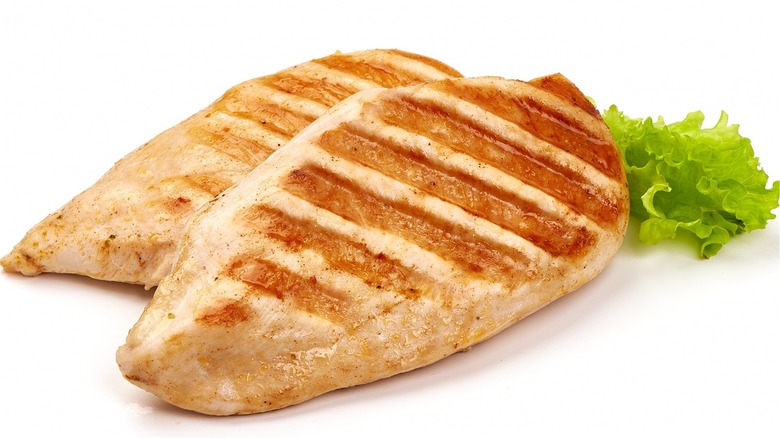The USDA Is Cracking Down On Chicken. Here's What You Need To Know
The United States Department of Agriculture (USDA) has announced that is cracking down on salmonella contamination in chicken. Their new plan involves more stringent testing at chicken production plants, per ABC. The new rules aren't finalized yet, but when they are, they will be published in the Federal Register, and there will be a period of public comment before they go into effect. Once the new rules are official, chicken processing plants will run the risk of being shut down if salmonella bacteria is found in their products and they are unable to reduce or eliminate the bacteria. Under current regulations, processing plants have to meet requirements for reducing possible contamination, but the USDA cannot force a processing plant to stop selling its products. With the new proposed rules, testing will be required at the processing plants.
According to the Mayo Clinic, salmonella is a bacterial disease that affects humans through water or food. Usually, people shed salmonella when they go to the bathroom, but at higher levels, it can become hard for the body to dispel, and it's easy to become infected by the bacteria. Many otherwise healthy people who are infected with salmonella recover after 8-72 hours of stomach pain. The best way to make sure you don't become infected with salmonella is to avoid undercooked meat and eggs. Salmonella infections can also come about through unpasteurized milk.
USDA hopes chicken rules will reduce salmonella cases
Salmonella affects 1.3 million Americans each year, and the USDA hopes to lower these numbers with their proposed new rules and guidelines. The products that the USDA is most worried about are chicken products that "appear to be cooked through but are only heat-treated to set the batter or breading," per ABC. This includes prepared foods like chicken Kyiv and chicken cordon bleu. Breaded and stuffed chicken has been the culprit in 14 salmonella outbreaks, per the USDA. Of the estimated 1.35 million Americans affected by salmonella each year, about 26,500 have to go to the hospital, and about 420 will die, according to the U.S. Centers for Disease Control and Prevention (CDC). One out of every 25 packages of chicken sold at grocery stores contains salmonella bacteria. Not everyone who ingests them gets sick, however.
According to the CDC, possible signs of salmonella include stomach cramps, diarrhea, nausea, and headaches. Usually, it clears up in a few days. However, immunocompromised people, as well as the elderly and very young, are at additional risk and should consider consulting a doctor if there is a risk of salmonella infection (via Mayo Clinic).

